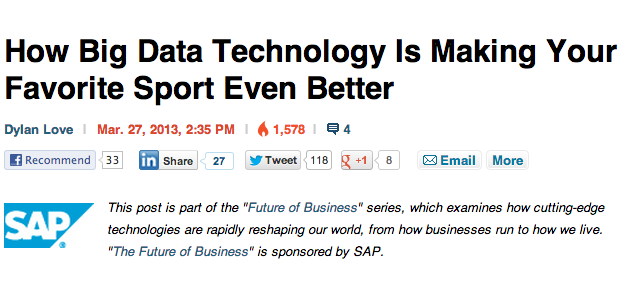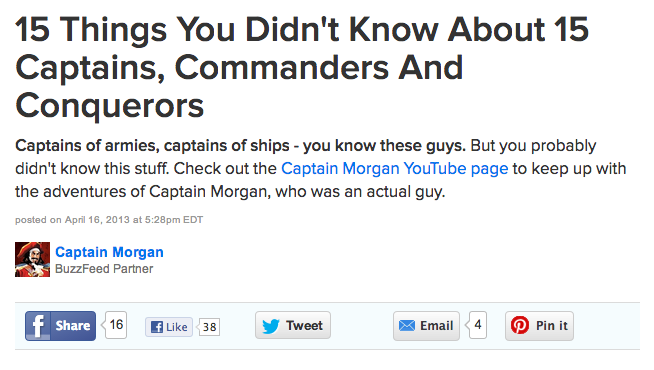
Talk to any agency, brand or publisher about what they’re paying attention to, and within five minutes, you’ll hear one (or all) of these terms: “native advertising,” “sponsored content,” “branded content,” “content marketing,” and “custom content.”
The problem is that those terms mean something different to everyone. The media tends to use the terms interchangeably. (Even the New York Times gets tripped up in defining these tactics.) Here’s an attempt to clarify what’s what. Please add your thoughts in the comments.
Native Advertising:
When an ad unit can only be bought and displayed on one platform. Think Facebook’s Sponsored Stories; Twitter’s Promoted Tweets; Tumblr’s Radar. These ad units are unique to those environments.
Sponsored Content:
When a brand pays a publisher to have its name and/or message associated with a particular story. This typically takes the form of a brief intro paragraph informing readers that the following article is sponsored by an advertiser. You’ll see phrases like “brought to you by,” “presented by,” or “sponsored by.” This is not content produced by the brand. The marketer is given a broad topic area that it can choose to associate its brand with. The marketer does not get a say in what will be produced, at least not in the type of sponsored content programs run by sites like Mashable, Business Insider and Digiday.
Advertising Content:
This is often labeled sponsored content or custom content. But it is really advertising in another form. The term “advertising content” can make this clear. It is advertising at the end of the day. What’s different about it is this advertising comes in the form of content, not display advertising. Think of BuzzFeed’s listicles and Forbes’ BrandVoice posts.
Brand Content
We have heard ad nauseam that brands are publishers now. What they produce, on their own and running through their own distribution channels, is brand content. Think of Red Bull’s YouTube channel. The video below is content created by the energy drink brand that blurs the lines between advertising and entertainment.
Content Marketing:
This is the catchall phrase that encompasses all of the above. On a most basic level, it means “not banner ads.” It conveys the strategic shift occurring at many brands that are thinking of ways to sell their wares and services beyond the hard sell. These efforts involve creating content and experiences people want to consume, while at the same time conveying a brand message. For a brand like Red Bull, that means hair-raising stunts and action-sports content; for American Express, it is producing tools and content useful and needed by small-business owners.
Image via Shutterstock
More in Media

Here are the biggest moments in AI for publishers in 2025
Here are some of the moments that defined how publishers adapted to the AI era this year.

Digiday+ Research roundup: Gen Z news consumption and diversification in the DSP space were 2025’s top trends
As 2025 winds down, we rounded up the biggest trends of the year, based on the data that resonated the most with Digiday’s readers.

What publishers are wishing for this holiday season: End AI scraping and determine AI-powered audience value
Publishers want a fair, structured, regulated AI environment and they also want to define what the next decade of audience metrics looks like.








